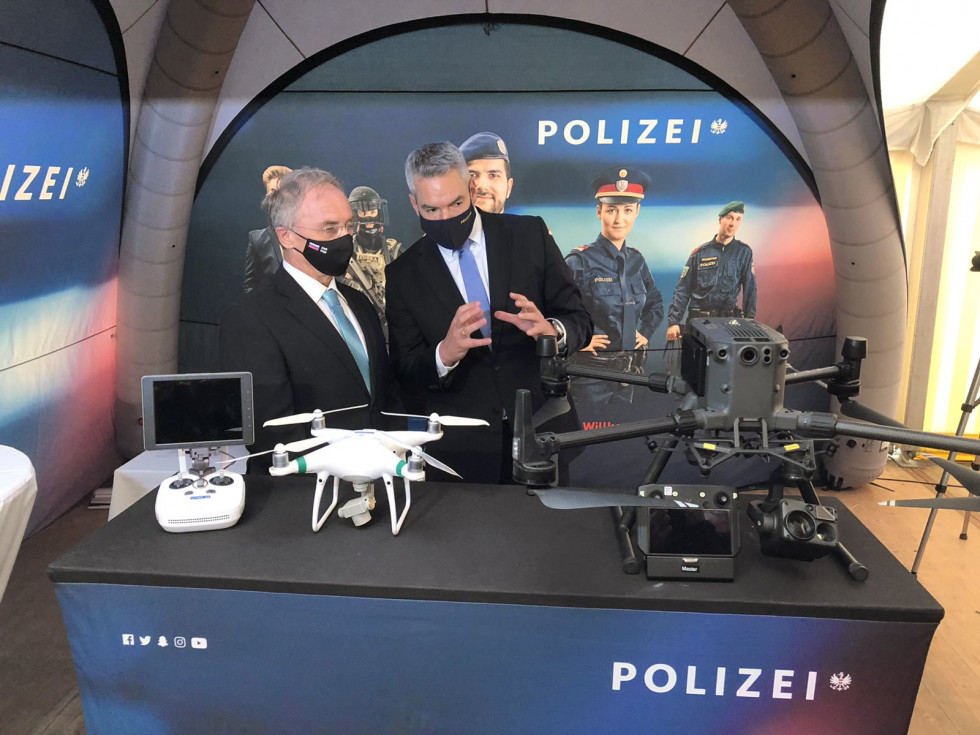Minister Hojs at Šentilj border crossing: Provision of citizens’ safety largely depends on modern technologies
According to minister Hojs, ministers »solved some issues related to smooth flow of traffic at border crossings Šentilj and Karavanke«. They agreed on a motorway lane for freight vehicles to be provided at Šentilj border crossing in order to cut tailbacks. As for Karavanke tunnel, ministers expressed support for finding solutions with involvement of motorway companies DARS and ASFINAG from Austria.
Ministers expressed their commitment to more intensive cooperation with the Western Balkans region in the field of prevention of illegal migrations. »We dedicated quite some time to Austria’s initiative to hold talks on better protection of external EU borders with our colleagues from Croatia, Bosnia and Herzegovina, and Serbia.« minister Hojs said. Ministers also briefly talked about the Pact on Migration and Asylum, expressing their concern about the proposal for countries to take responsibility for returns, given that EU has strong negotiating power in relation to third countries, and with returns being more efficiently done on the EU level.
With the current deteriorating situation in prevention of spread of COVID-19 infections, ministers also discussed future activities of both ministries and police forces. »We talked extensively about how both countries are going to organise the crossing of borders.« minister Hojs said, adding they »are both hopeful for borders to remain open despite the current COVID-19 situation.«
After the meeting, ministers watched the exercise of drone surveillance of the border between the countries by Slovenian and Austrian police. Minister Hojs noted that »joint exercise was a good demonstration of how border surveillance and other police activities for fighting crime and provision of citizens’ safety largely depend on modern technologies.” Ministers had actually agreed on the pilot project for use of drones in surveillance of Slovenian-Austrian border in late July in Vienna, at the bilateral meeting during the conference on efficient combat against current migration flows. The aim of the project is quick detection of illegal border crossings and consequently quick response by competent authorities.


